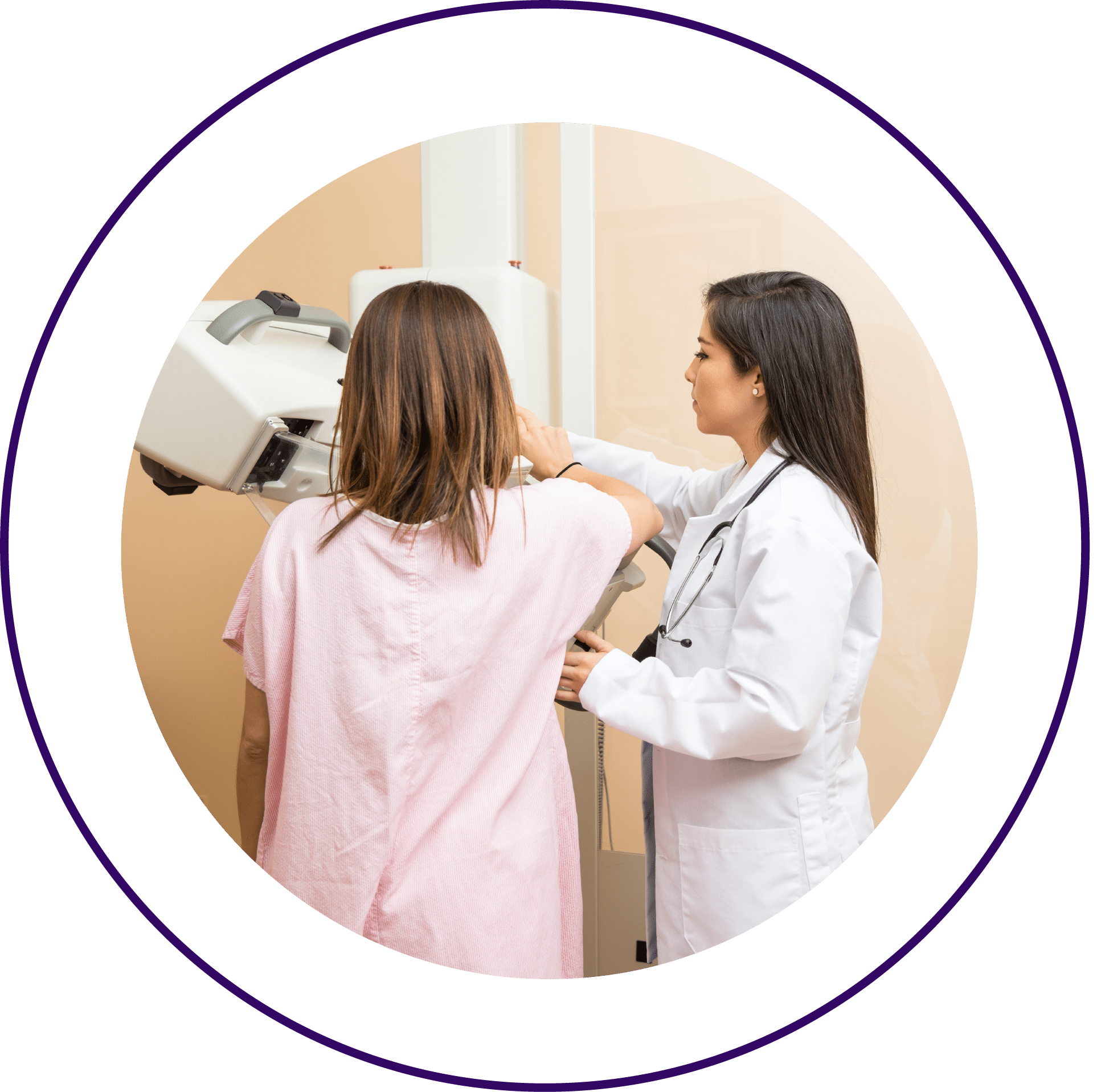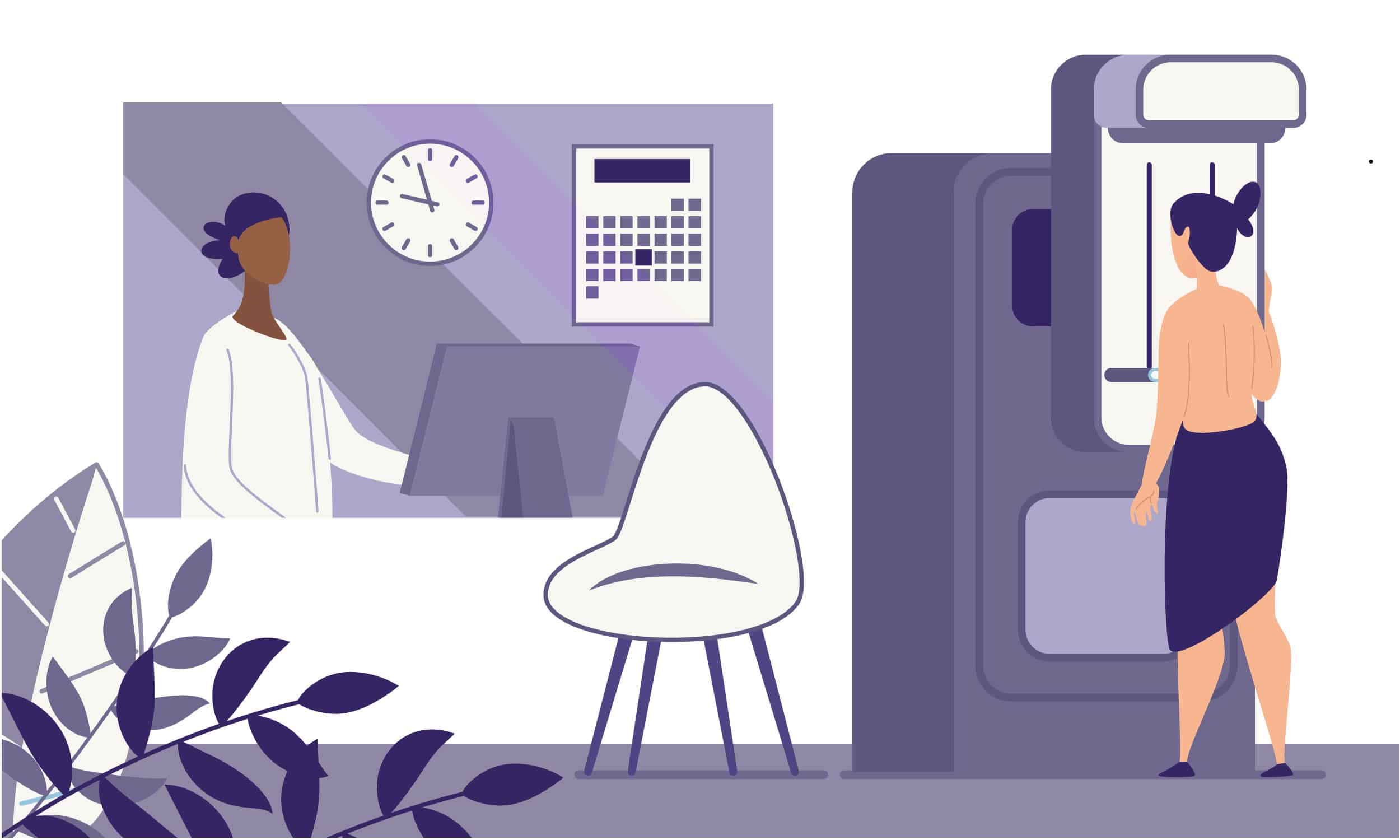Why it is important to get a mammogram
Why it is important to get a mammogram
WHY GET A MAMMOGRAM?
Breast cancer has become a significant reality in recent times in many households. We are all affected by breast cancer, if not personally, by association through friends or colleagues.
Statistically, breast cancer is the most common cancer in women of all races, with a lifetime risk of 1 in 27 in South Africa.
The incidence of breast cancer increases as women grow older, although women under the age of 40, especially those with a strong family history of breast cancer, are also commonly diagnosed in recent times.
We must realise that every person is at risk of developing breast cancer, it is our responsibility to take the necessary steps in taking care of ourselves, not only for our sake but also for our families and friends.
The personnel at Keystone Radiology are passionate about the specific needs of individuals regarding breast health care. We take pride in giving patients the necessary assistance in the treatment and early detection of breast cancer.
Early breast cancer treatment saves lives and leads to better treatment options and outcomes.
WHERE DO WE START?
First, we start with the self-examination. It is vital to make this a routine procedure. Regular examinations will familiarise yourself with the structure of your breasts and the easier it will be to identify any possible changes.
It is crucial noting that self-examination does not replace or negate the need for a Mammogram.
Mammography increased the detection of breast cancer, especially in its early stages, even before any visible signs appear.

When you are examining your breasts, it is essential to identify the following signs:
- New Lumps.
- Swelling (inflammation).
- Skin changes, especially centrally.
- Breast or nipple pain.
- Redness, scaling or thickening of the areolar area.
- Any discharge
- Unusual swelling under your armpit.
- New size changes.
- Development of new asymmetry.
WHY GET A MAMMOGRAM?
Breast cancer has become a significant reality in recent times in many households. We are all affected by breast cancer, if not personally, by association through friends or colleagues.
Statistically, breast cancer is the most common cancer in women of all races, with a lifetime risk of 1 in 27 in South Africa.
The incidence of breast cancer increases as women grow older, although women under the age of 40, especially those with a strong family history of breast cancer, are also commonly diagnosed in recent times.
We must realise that every person is at risk of developing breast cancer, it is our responsibility to take the necessary steps in taking care of ourselves, not only for our sake but also for our families and friends.
The personnel at Keystone Radiology are passionate about the specific needs of individuals regarding breast health care. We take pride in giving patients the necessary assistance in the treatment and early detection of breast cancer.
Early breast cancer treatment saves lives and leads to better treatment options and outcomes.
WHERE DO WE START?
First, we start with the self-examination. It is vital to make this a routine procedure. Regular examinations will familiarise yourself with the structure of your breasts and the easier it will be to identify any possible changes.
It is crucial noting that self-examination does not replace or negate the need for a Mammogram.
Mammography increased the detection of breast cancer, especially in its early stages, even before any visible signs appear.

When you are examining your breasts, it is essential to identify the following signs:
- New Lumps.
- Swelling (inflammation).
- Skin changes, especially centrally.
- Breast or nipple pain.
- Redness, scaling or thickening of the areolar area.
- Any discharge
- Unusual swelling under your armpit.
- New size changes.
- Development of new asymmetry.
WHAT IS A MAMMOGRAM?
A Mammogram is specialised imaging that uses low dose X-rays to evaluate the internal structure of the breast. Mammography is the most important method in the early detection of breast cancer.
The goal of breast cancer screening is to prevent patients from presenting at an advanced, incurable stage of the disease — currently 20% of South African woman present with breast cancer at an incurable stage.
Mammograms will be able to show any abnormalities in the breast and help the treating doctor to detect anomalies before they become cancer and to detect early cancer before it leads to death.

WHAT IS A MAMMOGRAM?

A Mammogram is specialised imaging that uses low dose X-rays to evaluate the internal structure of the breast. Mammography is the most important method in the early detection of breast cancer.
The goal of breast cancer screening is to prevent patients from presenting at an advanced, incurable stage of the disease — currently 20% of South African woman present with breast cancer at an incurable stage.
Mammograms will be able to show any abnormalities in the breast and help the treating doctor to detect anomalies before they become cancer and to detect early cancer before it leads to death.
WHAT ENTAILS THE MAMMOGRAM PROCEDURE?
- The patient will be asked to undress from the waist upwards. The patient will be provided with a cape to cover herself.
- One of our professional Mammographers will perform the Mammogram with the use of a full field Digital Mammography unit.
- The Mammographer will position the patient’s breast for the procedure.
- To be able to get a high-quality image, place the breast inside the Mammogram unit. The Mammographer places the patient’s breast on the machines’ plate. The upper plastic plate is lowered to compress the patient’s breast for a few moments, while the image is being taken.
- Once the images are taken, the patient will be taken through for a routine, supplementary breast ultrasound.
- The findings of the study are discussed with the patient during the ultrasound. If there is something of concern, this will then be mentioned and explained to the patient by the Radiologist.
- Once the ultrasound is complete, the patient will receive a dedicated Radiological report.
We need to address the myths and facts about mammograms
Women below the age of 40 years cannot be diagnosed with breast cancer.
FALSE
Many women under the age of 40 are diagnosed with breast cancer every day.
Men cannot get breast cancer.
FALSE
It is less likely than females but still one in every 992 men develops breast cancer.
Alcohol is not linked to breast cancer.
FALSE
Alcohol increases the risk of breast cancer.
Only women with a family history of breast cancer are at risk.
FALSE
All women are at risk, family history, only increases the likelihood of developing breast cancer.
Mammograms can cause cancer.
FALSE
Mammograms utilise minimal doses of radiation, the risk of harm has never been proven. With modern technology radiation doses have consistently decreased with time while increasing in accuracy.
Mammograms are painful.
FALSE
The quality of the person performing the Mammogram will determine whether it is painful. Thus, with specialised personnel, the procedure should not be painful at all.
My previous Mammogram was normal, and I don’t have to repeat it annually.
FALSE
Mammograms help with the detection and not prevention of breast cancer. Having an annual mammogram increases the patient’s chances of detecting cancer while in the early stages. We have many patients with previous normal studies presenting with new changes which lead to the early detection of breast cancer.
We strive to give all our patients a safe and reassuring experience – starting from the booking your Mammogram, through to the receiving your results.
We make a Mammogram a painless and state-of-the-art procedure. We are sympathetic and empathic to our patients’ anxieties and like to personally follow-up with our diagnosed patients.
Please do not delay the book of your Mammogram!
Make a booking
Need to get a Mammogram done?
Cancer is a word, not a sentence – John Diamond.
WHAT ENTAILS THE MAMMOGRAM PROCEDURE?
- The patient will be asked to undress from the waist upwards. The patient will be provided with a cape to cover herself.
- One of our professional Mammographers will perform the Mammogram with the use of a full field Digital Mammography unit.
- The Mammographer will position the patient’s breast for the procedure.
- To be able to get a high-quality image, place the breast inside the Mammogram unit. The Mammographer places the patient’s breast on the machines’ plate. The upper plastic plate is lowered to compress the patient’s breast for a few moments, while the image is being taken.
- Once the images are taken, the patient will be taken through for a routine, supplementary breast ultrasound.
- The findings of the study are discussed with the patient during the ultrasound. If there is something of concern, this will then be mentioned and explained to the patient by the Radiologist.
- Once the ultrasound is complete, the patient will receive a dedicated Radiological report.
We need to address the myths and facts about mammograms
Women below the age of 40 years cannot be diagnosed with breast cancer.
FALSE
Many women under the age of 40 are diagnosed with breast cancer every day.
Men cannot get breast cancer.
FALSE
It is less likely than females but still one in every 992 men develops breast cancer.
Alcohol is not linked to breast cancer.
FALSE
Alcohol increases the risk of breast cancer.
Only women with a family history of breast cancer are at risk.
FALSE
All women are at risk, family history, only increases the likelihood of developing breast cancer.
Mammograms can cause cancer.
FALSE
Mammograms utilise minimal doses of radiation, the risk of harm has never been proven. With modern technology radiation doses have consistently decreased with time while increasing inaccuracy.
Mammograms are painful.
FALSE
At Keystone Medical, we commit ourselves to make the experience as comfortable as possible for the patient. With our new 3D breast mammography technology, we can move away from an era of using deep pressure for imaging that was causing pain for some patients. Feel free to leave your details if you would like our all-female staff to walk you through the new process.
My previous Mammogram was normal, and I don’t have to repeat it annually.
FALSE
Mammograms help with the detection and not prevention of breast cancer. Having an annual mammogram increases the patient’s chances of detecting cancer while in the early stages. We have many patients with previous normal studies presenting with new changes which lead to the early detection of breast cancer.
We strive to give all our patients a safe and reassuring experience – starting from the booking your Mammogram, through to the receiving your results.
We make a Mammogram a painless and state-of-the-art procedure. We are sympathetic and empathic to our patients’ anxieties and like to personally follow-up with our diagnosed patients.
Please do not delay the book of your Mammogram!
Make a booking
Need to get a Mammogram done?
Cancer is a word, not a sentence – John Diamond.

